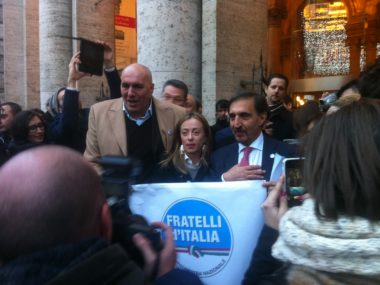“There is absolutely no justification for this type of senseless violence. None.”
-Barack Obama, Remarks on September 12, 2012, following attacks on the US consulate in Benghazi, Libya
Violence takes numerous forms. Some violence is instrumental. There is a political goal behind it. The violence is calculated, deliberate, meant to get the message across to a variety of audiences to achieve that goal — even if the targets don’t fully understand the message. Perpetrators choose violence because they see it as the most efficient way of achieving the goal. Regardless, violence ends when the perpetrators achieve their aims, or otherwise give up on the struggle.
Then there is demonstrative violence. This isn’t necessarily trying to achieve any particular goal. Instead, it is entirely expressive. People are angry, and they want others to know it. Such violence is often reactive and spontaneous and is much less predictable than instrumental violence.
We do not yet know whether the fatal attacks of four American diplomatic officials in Benghazi are instrumental or demonstrative. The distinction is important, because different types of violence demand different policy responses.
If reports are true that the violence was planned, deliberate, and meant to punish the United States for recent attacks against Al Qaeda, then we could consider it instrumental. In theory, instrumental violence can be diminished by altering the perceived costs of the violence relative to the benefits it yields. Use offensive postures to make violence extremely costly and defensive measures to give violence few expected gains, and violence will go down.
But demonstrative violence is another story. If the attacks were more or less perpetrated by heavily-armed (and uncontrolled) fundamentalist militias seeking to express their discontentment, then offensive postures may not change the level of violence. In fact, further perceived offenses may backfire, adding even more fuel to the fire. With demonstrative violence, the best course is to strengthen defenses and wait for the fury to subside.
More will be revealed, as the story develops, as to which type of violence claimed the lives of these four public servants — and which course to pursue to prevent future assaults.






3 comments
I am not sure I understand why punishing the perpetrators of demonstrative violence may not deter future attacks. The distinction you make between demonstrative and instrumental violence sounds like the distinction between “premeditated” and “un-premeditated” violence in domestic law. Is there reason to believe that harsher punishments, more police work, better surveillance does not deter “un-premeditated” violence? I believe people control their temper better if they know that losing their temper will cost them dearly.
I think the main distinction here is that when people are using demonstrative violence, they are not thinking in consequentialist terms at all. Empirically, instrumentalist violence tends to respond more predictably to repression, whereas demonstrative violence tends to happen in spite of repression in much more erratic patterns when people literally don’t care what the consequences are. It’s more of a reflexive activity. Regardless, the discussion may be moot, as Jay notes below.
Very helpful, Erica, thanks. Over at Danger Room, Spencer Ackerman has now put together a timeline of yesterday’s events that show the attack was almost certainly instrumental, not demonstrative:
http://www.wired.com/dangerroom/2012/09/libya-fast-team/